09 Jan Decoding Vintage Patterns
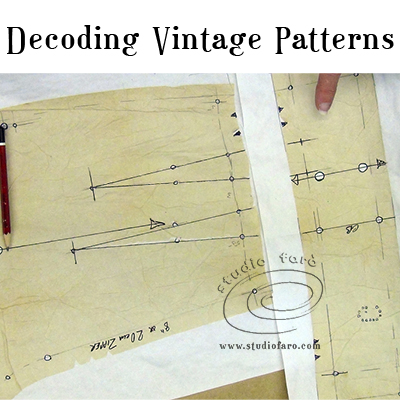
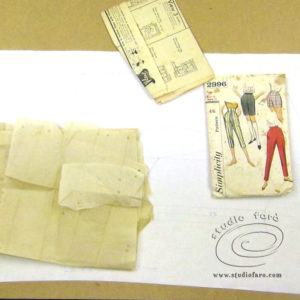
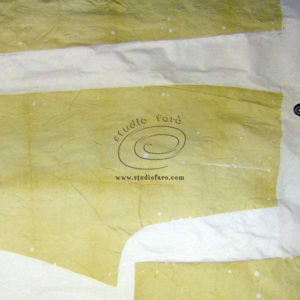
Then began the process of identifying the different hole punches, and there various functions. I’ve inked-in all the shapes and then I compared the front and back trouser patterns trying to work out how they go together:
- Some are clear and obvious as seam allowances on the leg seams.
- And the dart shapes are also clear and easily marked out.
- Running down the centre of each trouser leg are a series of holes that show the grain line.
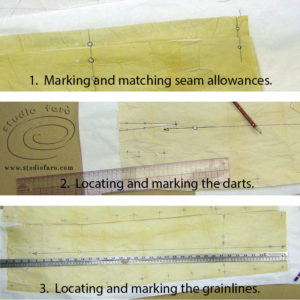
And finally, here comes the most interesting aspect of this pattern. I’m very familiar with trouser patterns and so the following is like finding treasure on the beach. When I worked my way down the trouser inseam (that’s the inside leg seam) I found the markings made for a very interesting set of instructions.
- When they are compared, the front and back inseam are exactly the same length. I know that isn’t so unusual, however when I make trouser patterns, the inside back leg is approx. 1cm shorter than the inside front leg. This difference occurs in the upper thigh section of the of the inseam and is meant to help the back thigh of the trouser to drape a little better. This feature has it’s origins in mens tailored trousers and I think it always makes for a much better drape in the trouser leg. The answer to this riddle is in the detail of the set of notches on this inseam.
- From ankle to the calf notches the fit is the same for the front and the back. As you would expect.
- Then comes something interesting: the notches from the calf to above the knee are not the same fit. The front is in fact shorter than the back so that you have to ‘stretch the front onto the back’. This is the first time ever that I have seen this feature in a trouser pattern!!
- From above the knee to the crotch level, the front is longer than the back, as I am used to in all my trouser patterns. This means your meant to ‘stretch the back onto the front’ as mentioned above.
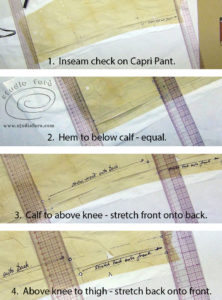
Take this moment to sign up for my fabulous newsletter! Every month or so I send an email newsletter with new website content and always, always an enormous discount code for all my sewing patterns, garment blocks and pattern making instructions.
This discount code is for subscribers only. Don't miss out!


No Comments